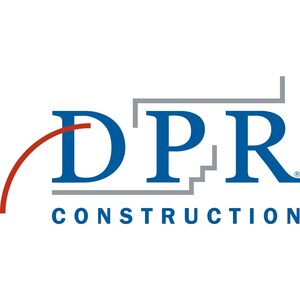Opportunities to achieve greater cost certainty provide confidence to advance capital projects, according to DPR leadership
REDWOOD CITY, Calif., Feb. 20, 2024 /PRNewswire/ -- Firms planning capital projects can move forward with a greater degree of confidence this year by exploring new ways to realize value, according to leadership at DPR Construction, one of the nation's top technical builders. Despite continued market pressures, opportunities exist to achieve cost and schedule certainty by:
- Breathing new efficiency into old processes through more collaborative delivery methods.
- Realizing economies of scale by standardizing certain building elements.
"Market forces affect many aspects of capital projects, and we know our customers seek cost certainty before moving forward," said DPR CEO George Pfeffer. "We also know the centuries-old process by which capital projects have been designed and built adds pressures and potentially creates unpredictability."
"If industry partners focus more on integration and better alignment on project goals and incentives, it will translate to a better experience and value for project owners, end users and other stakeholders," Pfeffer added.
Collaboration is the Key
The traditional process — first hiring a designer, then shopping for a contractor after the design has been settled on — creates gaps in collaboration and, potentially, lost value. Employing methods like design-build instead have been shown to add value. Research from the Charles Pankow Foundation and Constructor Industry Institute noted that design-build projects, where contractors and designers collaborate to propose projects aligned to owner needs and outcomes, consistently cost less and are delivered faster than projects using traditional methods.
Collaborative delivery methods like design-build and integrated project delivery (IPD) also can give greater predictability by harnessing the use of virtual design and construction (VDC) to limit surprises emerging in the field, unlocking advanced multi-scope, multi-trade prefabrication methods, and alleviating labor pressures by scheduling elements of scope when labor is available.
"A major healthcare provider in the San Francisco Bay Area began using IPD for its projects in 2007," Pfeffer said. "Across 30 projects and billions of dollars of investment, 100% of their projects have met or beaten budget and schedule goals. That compares to less than 30% of projects across the construction industry in that period. That type of approach should be scaled."
Setting the Right Standards
Chris Daum, FMI Corporation's president and CEO, noted in DPR's latest Great Things newsletter that a major issue leading to cost escalations is that construction and design is dominated by discrete, unique projects. Owners who have repeatable building elements across their portfolios or have an ongoing program that includes multiple construction projects, can unlock advantages by identifying standard elements across buildings, including:
- Designing once and procuring at scale, greatly increasing value and cost certainty.
- Established relationships with builders, suppliers, transporters, permitting entities and financial institutions that facilitate successful outcomes.
- Improved processes and final products through both repetition and capturing lessons-learned on successive projects.
"Bathrooms in many building types can be designed once and repeated in multiple buildings," Pfeffer said. "Healthcare patient rooms, pharmaceutical benchtops and data center infrastructure are just a handful of potential examples where standardized elements can have tangible benefits during construction and during building operations. And the advantages of this approach multiply when early collaboration leads to designs that include the details builders will use."
"With the adoption of new methods that allow our industry to deliver projects faster, leverage technology, and increase collaboration, we also make the industry more attractive to future generations of workers," added Pfeffer. "The upshot is adopting new methods not only helps customers serve their markets now, but they will also realize improving value from new methods when market pressures have eased."
About DPR Construction
DPR Construction is a forward-thinking, self-performing general contractor and construction manager specializing in technically complex and sustainable projects for the advanced technology, life sciences, healthcare, higher education and commercial markets. DPR's portfolio of work ranges from large-scale new construction to small tenant improvements and special projects. Founded in 1990, DPR is a great story of entrepreneurial success as a private, employee-owned company that has grown to a multi-billion-dollar organization with offices around the world. Strategically focused on delivering more predictable outcomes through applications of virtual design & construction, prefabrication, its team of self-perform craft, and leveraging data to learn and improve from DPR consistently ranks among the top building contractors and employs approximately 11,000 professionals across its family of companies. For more information, visit http://www.dpr.com.
For more information, please contact:
DPR Construction
Email: [email protected]
SOURCE DPR Construction

WANT YOUR COMPANY'S NEWS FEATURED ON PRNEWSWIRE.COM?
Newsrooms &
Influencers
Digital Media
Outlets
Journalists
Opted In



Share this article